
Yellowstone National Park is located primarily in the US state of Wyoming and was the first national park to be designated anywhere in the world back in 1872. It is known for its wide variety of wildlife - 67 different species of mammals call this place home, not including the many birds, reptiles, and fish, which bring the number of species into the hundreds. It is also the home to many geysers.
Yellowstone is one of the biggest nature reserves in the world, covering 3,468 square miles (8,983 square km). It has rivers, canyons, lakes and mountain ranges making it an incredibly popular destination for nature lovers. It sees about 2 million visitors a year, with July being the busiest month by far. Some 3,700 employees work in Yellowstone, and it offers nine hotels and lodges.
Note: If you're planning a visit, make sure you always follow the rules - for your own safety as well as that of the animals!
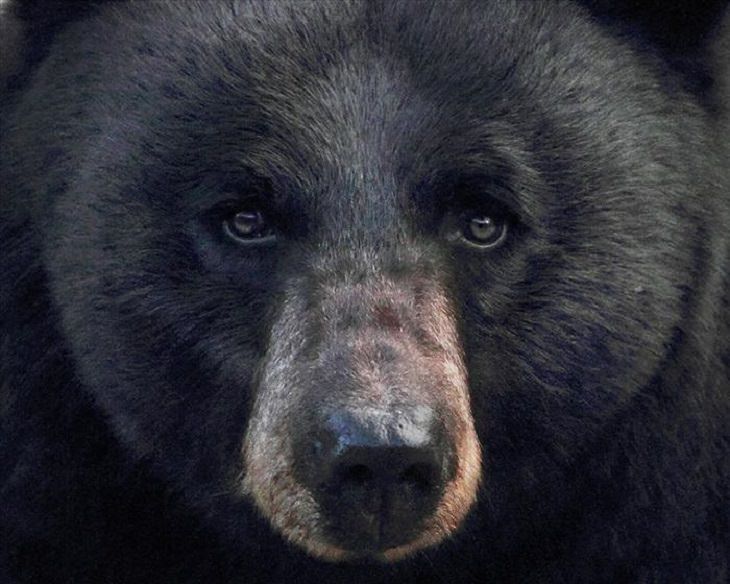
Up close and personal with a black bear at Yellowstone. Yellowstone National Park is home to two types of bear - grizzly and black.

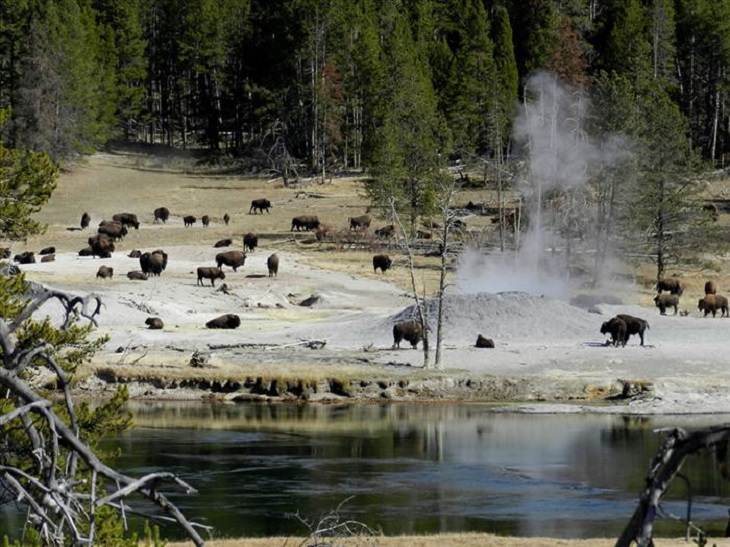
A herd of bison. As big and slow as they look, a bison can run three times faster than a human when it needs to. Park rangers advise that if you see one, you should keep your distance and stay in your car.
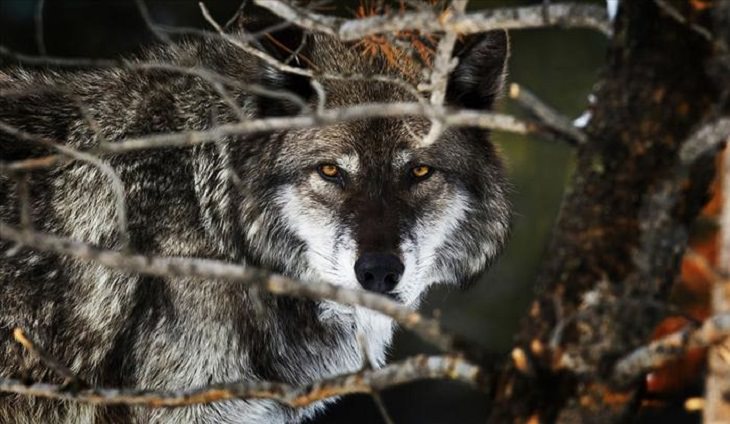
A Yellowstone wolf.
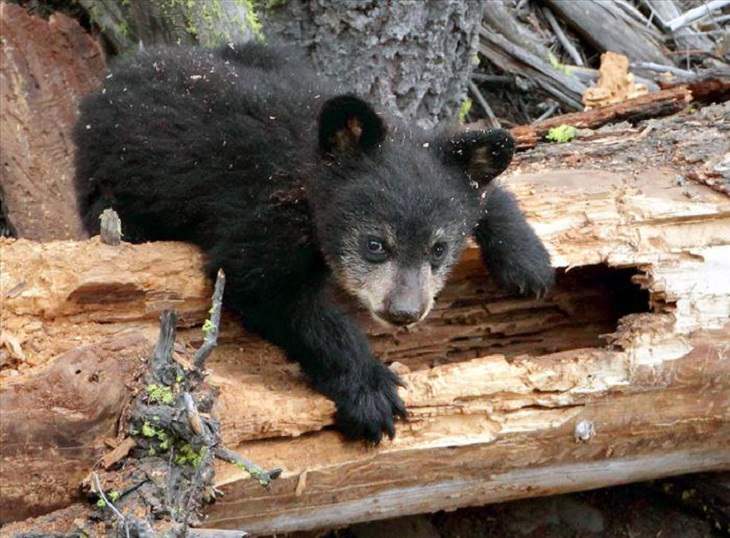
A black bear cub seeks yummy ants and grubs, as it digs into an old log in search for them.

A bull elk making itself heard in the Gibbon Meadow. Although these are beautiful animals, park staff warn visitors at Yellowstone to keep a safe 25-yard (23 meter) distance from them. This is also standard practice in the presence of other animals in the park, however, a distance of at least 100 yards (91 meters) should be kept from bears and wolves.
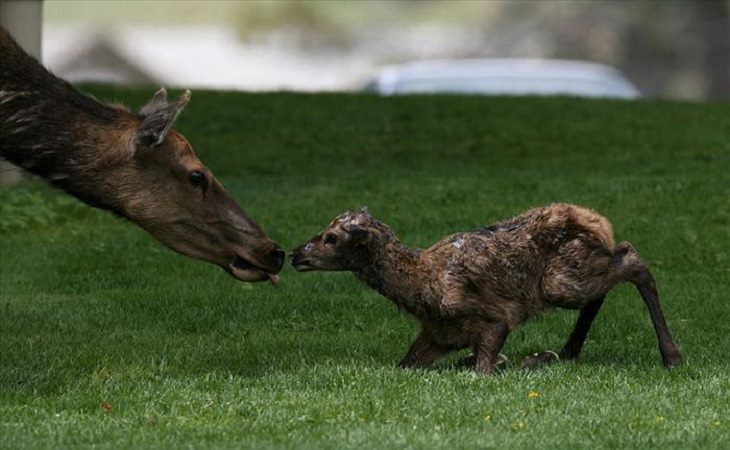
This half-hour-old elk calf was pictured at Mammoth Hot Springs.
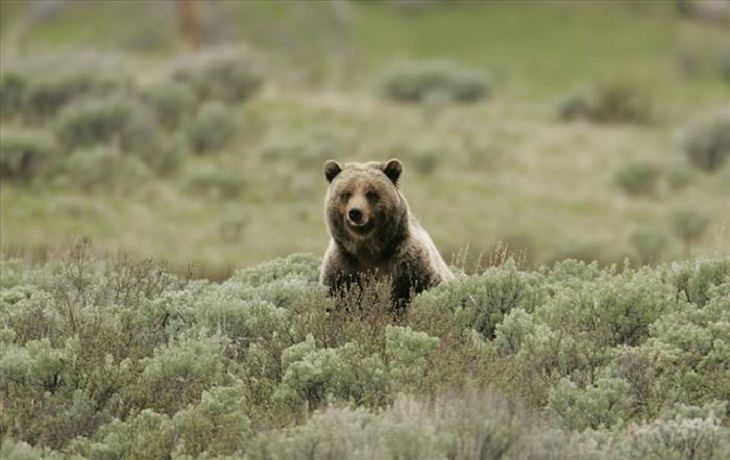
A grizzly bear looks on near the Swan Lake Flats. According to NPS warnings, some people mistakenly believe that when a bear rears up on its hind legs, it means it's about to charge and attack (people have learned this from Hollywood movies). The true meaning of the behavior is curiosity - they try to get a better look.
Bears gather this information through a combination of scent, sight, and sound. Standing up on two legs improves the bear's ability to gather sight and scent information. This is a good time to start backing away, talking to the bear in a calm voice, and showing the bear that you are a person and that you mean no harm to it or its cubs.
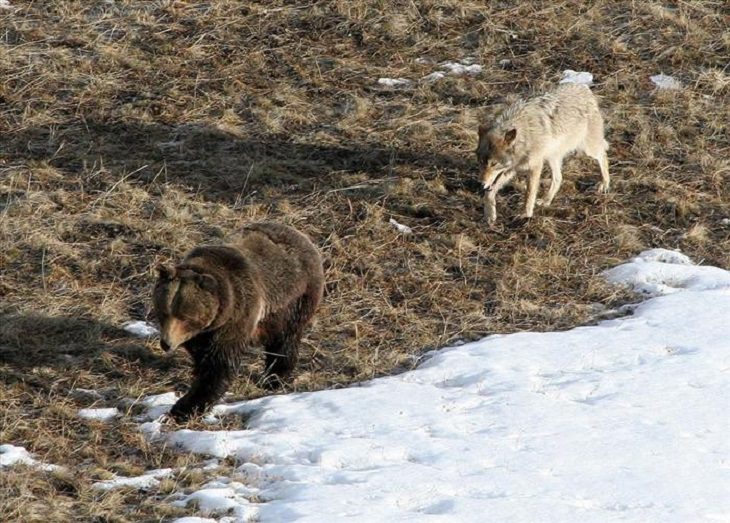
A Leopold wolf follows a grizzly bear. Probably not the best move...

A beautiful red fox in Lamar Valley.
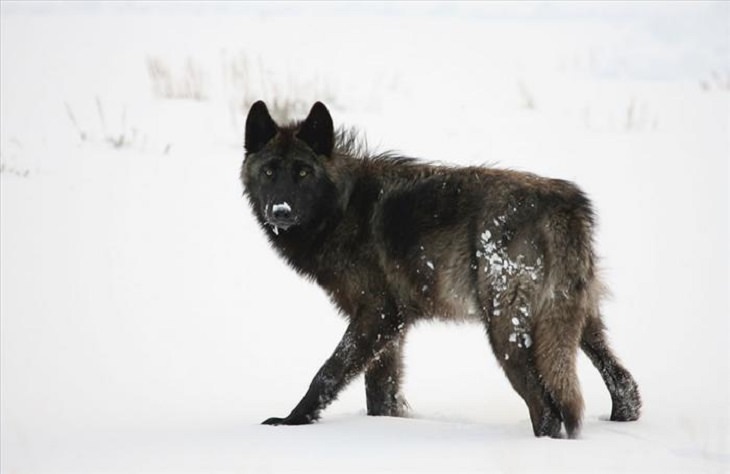
A black wolf in the snow of Lamar Valley. There were no wolves in Yellowstone before 1995, but after being reintroduced there, they thrived. Today there are over 300 wolves, their descendants, living in Yellowstone.
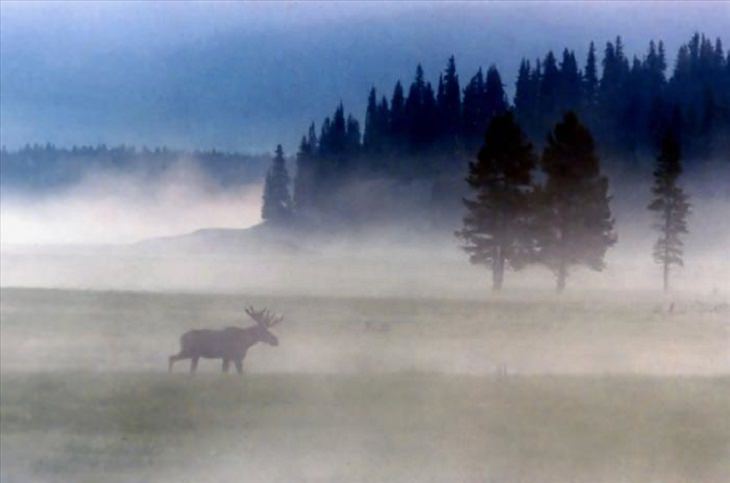
A bull elk in the morning fog.

A mountain lion picking its way carefully down a rock. The mountain lion, also called a cougar, is the largest member of the cat family living in Yellowstone. Mountain lions can weigh up to 200 pounds (~90 kg), although lions in Yellowstone are thought to range between 140 and 160 pounds (~65 and ~70 kg) for males and around 100 pounds (45 kg) for females.
Two to three kittens may be born at any time of year, although most arrive in summer and fall. For reasons that are not clear, only about 50 percent of kittens survive their first year. The current population of lions in Yellowstone is estimated to be 18-24 in total and it is thought to be increasing.

The 68th mammal in Yellowstone is the nature photographer. This group has been waiting since dawn for a badger to show up. Nature photography, some say, is 5% luck, 5% skill, and 90% patience.
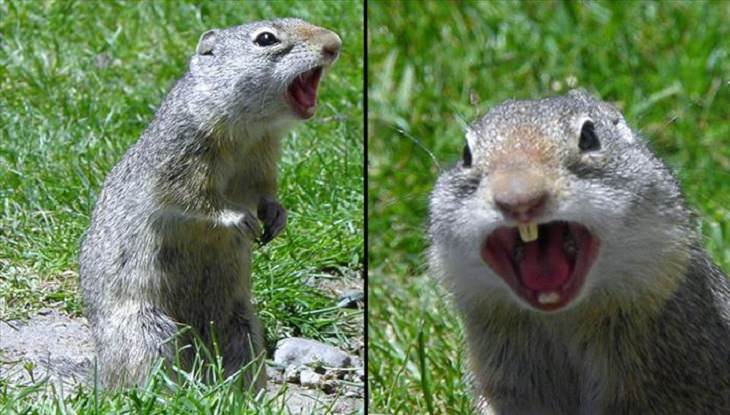
No, this mammoth ground squirrel isn't yawning, it is actually screeching as a sign of warning, which is why it is also known as the 'screeching' ground squirrel. They only live in the states surrounding Yellowstone.
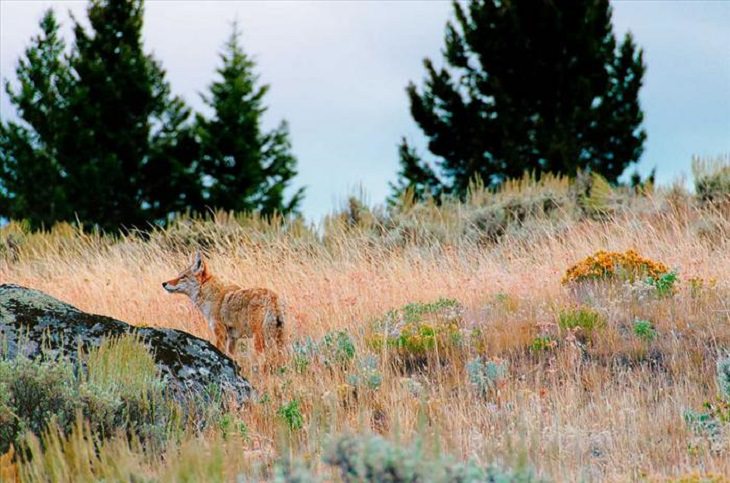
A beautiful coyote. It's another stunning creature you'll be able to see roaming around this park if you visit.

A bald eagle stands over the Yellowstone River. According to Wikipedia: "Since the creation of the park in 1872, 318 species of birds have been documented within its boundaries. Although Yellowstone is not a birding mecca because of its high altitude and cold winters, it is home to a variety of interesting bird species that attract visitor attention every year. The park has a good resident population of Bald Eagles, Trumpeter Swans, Common Loons, Ospreys, American White Pelicans, and Sandhill Cranes."
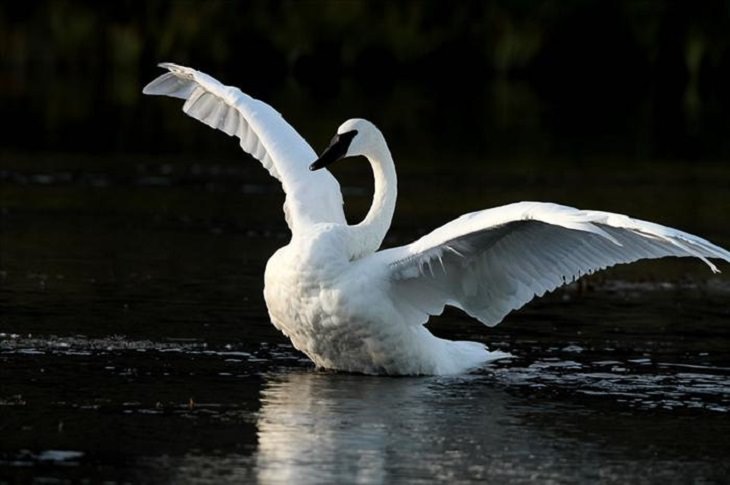
A trumpeter swan, named that way due to the trumpeting sound it makes, opens its large wings.

Four cubs from a single grizzly family. This is a very rare number of cubs born in one pregnancy and is only the third time it has happened in the history of the park.
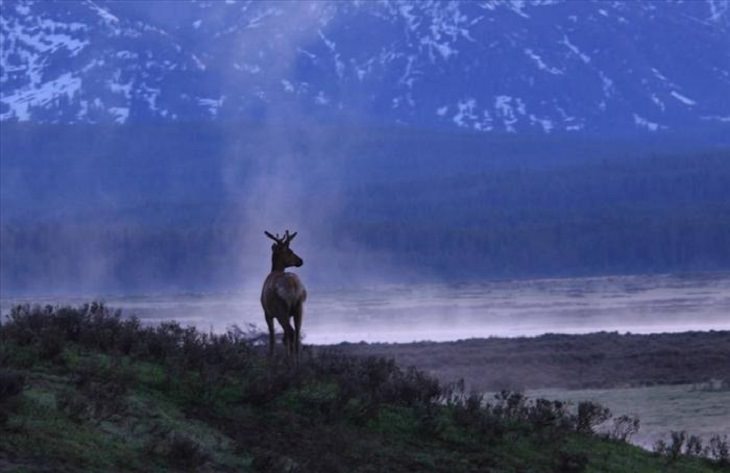
Seven native ungulate species live in Yellowstone, namely elk, mule deer, bison, moose, bighorn sheep, pronghorn, and white-tailed deer.
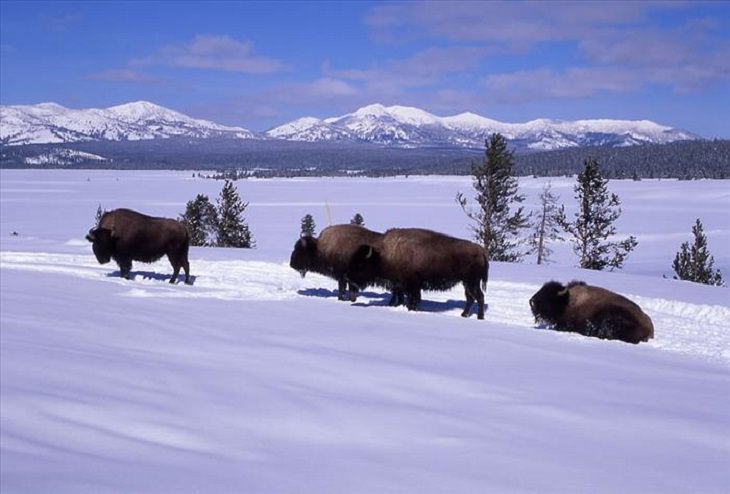
Bison during the winter at Yellowstone. The Yellowstone bison population numbers between 2,300-4,500. Bison actually harm more people every year in Yellowstone than bears do. People don't keep their distance from the peaceful looking bison and end up getting charged at by the angry beasts.
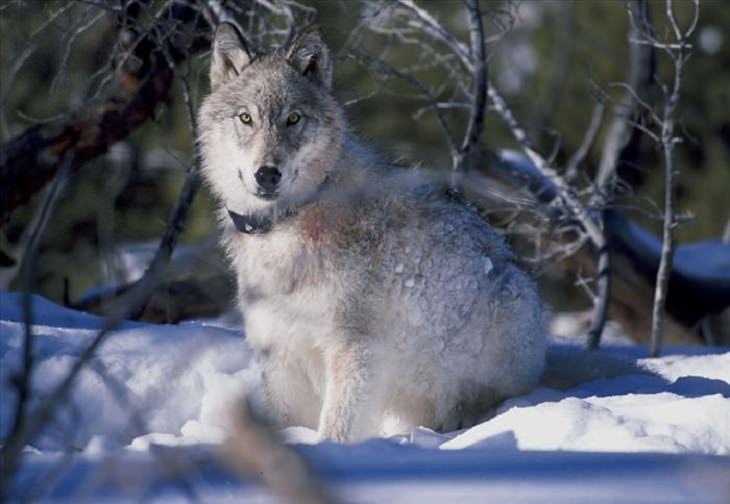
A wolf watches biologists coming to visit, after being captured and collared with a radio transmitter. These collars give biologists a chance to understand how the wolf population is doing since it's incredibly hard to capture them - they are masters of stealth.
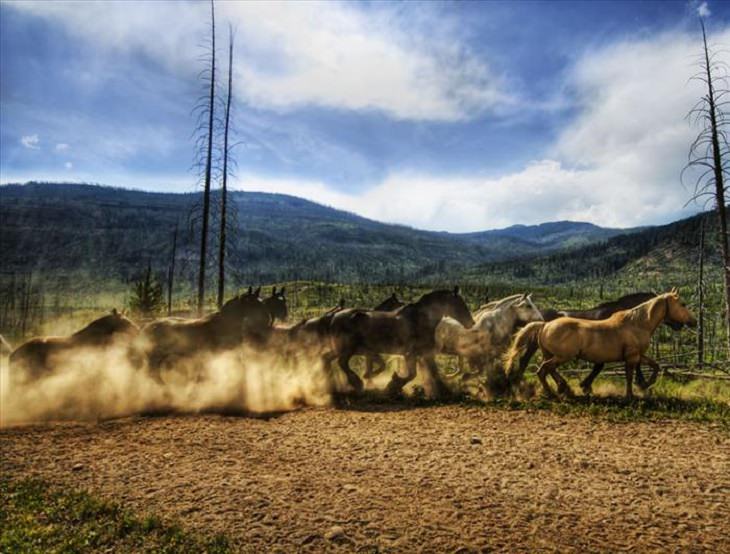
A stampede of 40 wild horses running from one meadow to the next. Most wild horse groups have one leader that determines the direction the group runs in.
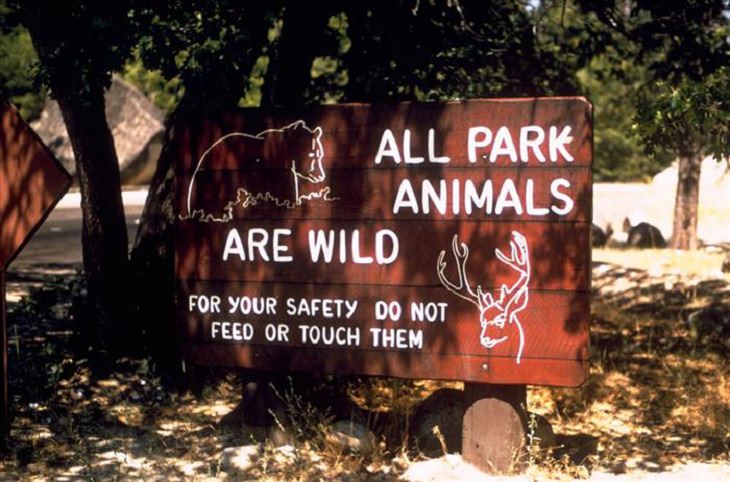
Visitors to Yellowstone must understand that these are wild animals, and they are not accustomed to humans. A good way to judge, say the park rangers, is to see if your presence affects the behavior of the animals in any way. If it does, you're too close to them.

When a 2,0000-pound buffalo wants to walk on the road, it'll walk on the road. Especially if it's in a group. Drivers have to be extra careful because they have been known to charge at cars, which to them may look like big, scary animals. Otherwise, they mostly ignore them.
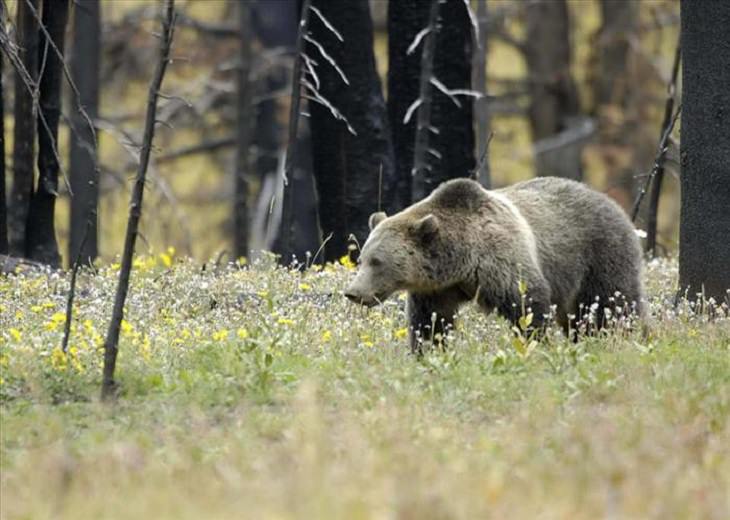
A grizzly bear looking for food in a flowery field. Always know 'bear protocol' before going into the park, says the park service, this can save your life in some cases.
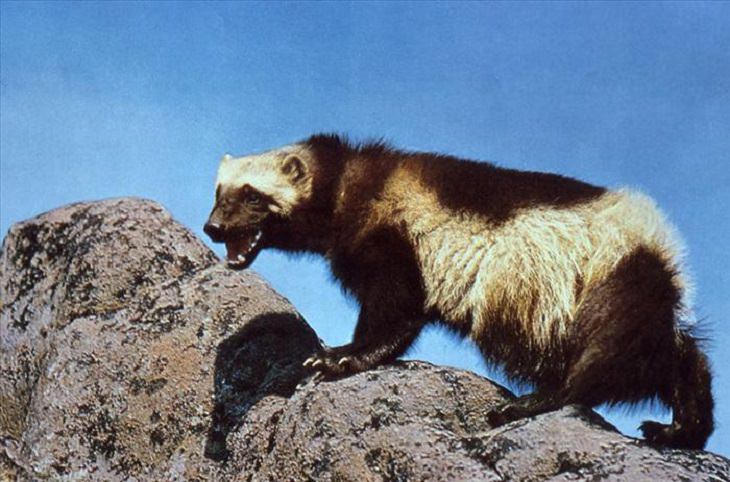
A rarely seeWolverinene. Wolverines, like the lynx, need large territories and will defend them with great enthusiasm.
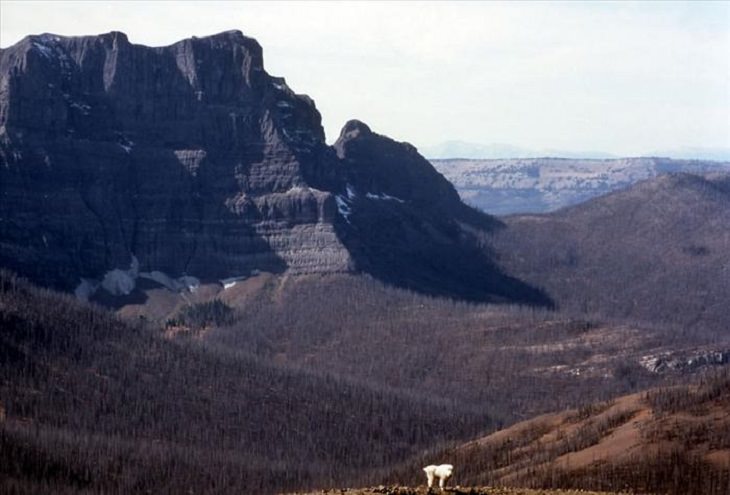
A mountain goat under 'Cutoff Peak'. The mountain goats are not native to this area but have colonized the northern parts of the park after being introduced to the environment.
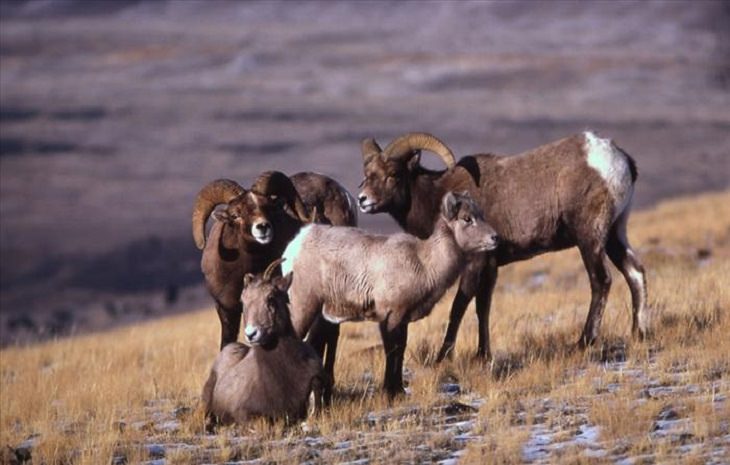
Big horn sheep. The herd living on the Northern range of Yellowstone number about 200 animals, and can be seen traveling between their favorite cliffs to the river where they drink.
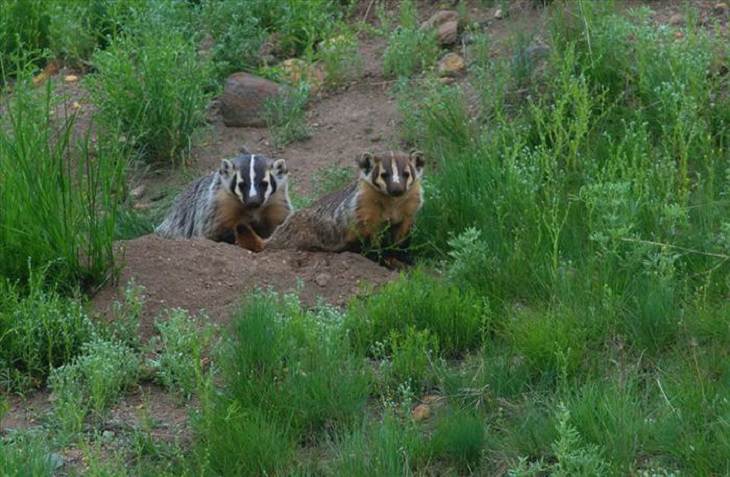
American badgers. The badger is a small mammal but it is known to be fierce and actually dangerous when defending territory or their cubs. Never approach a badger - they may look cute, but they can really hurt you.
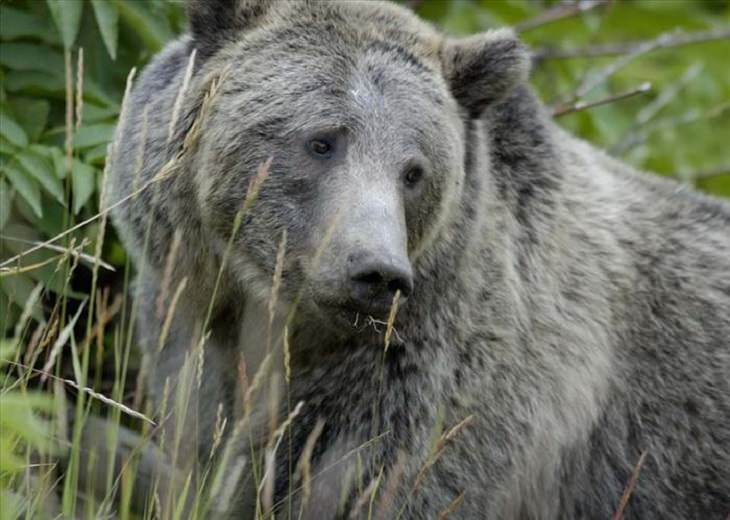
Bears may be seen in Yellowstone March through November. Yellowstone is one of the only areas of the US that still has large grizzly bear populations. According to the 2013 Yellowstone trip planner: "Do not run from a bear. Carry bear spray and take time to learn how to use it safely and effectively.
If you have a surprise encounter with a bear, do not run. Slowly back away. If a bear charges, stand your ground and use your bear spray. It has been highly successful in stopping aggressive behavior in bears. If a bear charges and makes contact with you, fall to the ground onto your stomach and 'play dead'.”
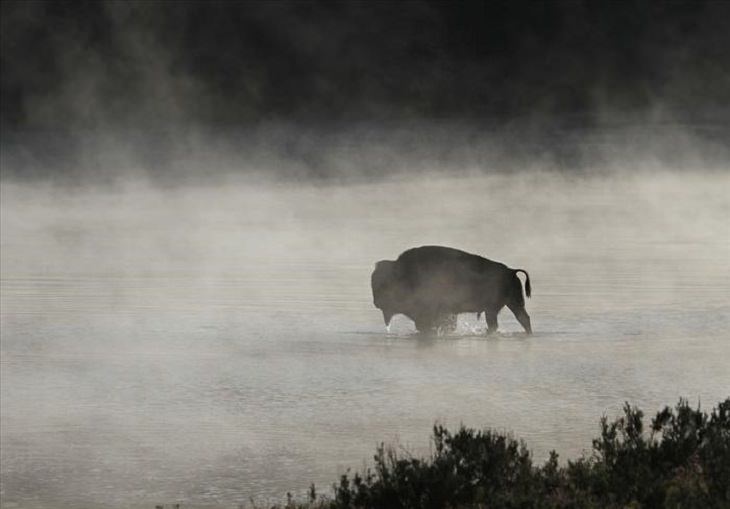
A bull bison crossing the Yellowstone river. Bison have lived in the area of Yellowstone since prehistoric times, they are truly the natives of this land and were hunted and respected by the Native Americans. The Yellowstone herd is one of the few in the world that doesn't have any cattle genes mixed in by man.
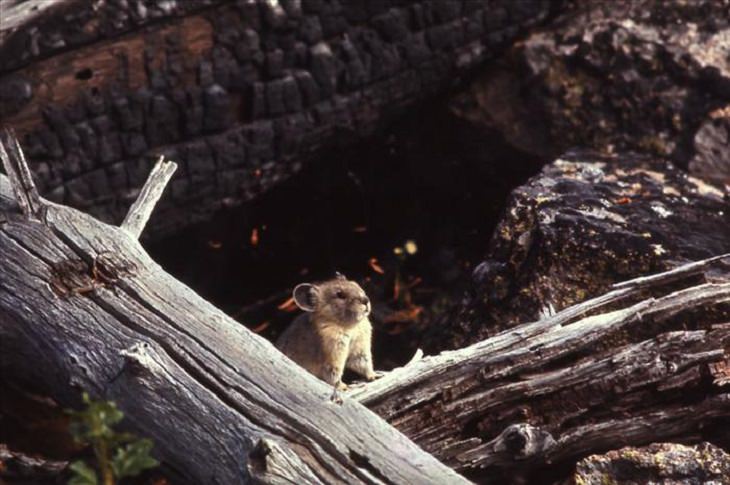
A cute little pika. Pikas are native to cold climates, mostly in Asia, North America and parts of Eastern Europe. They love the cold and it is conjectured that global warming is pushing them to seek higher places and to migrate north. Most species live on rocky mountain sides, where there are numerous crevices to shelter in, although some also construct crude burrows.

A fierce-looking mountain lion. Mountain lions tend to be great hiders and move in secret, so few visitors actually get lucky enough to view one for themselves.
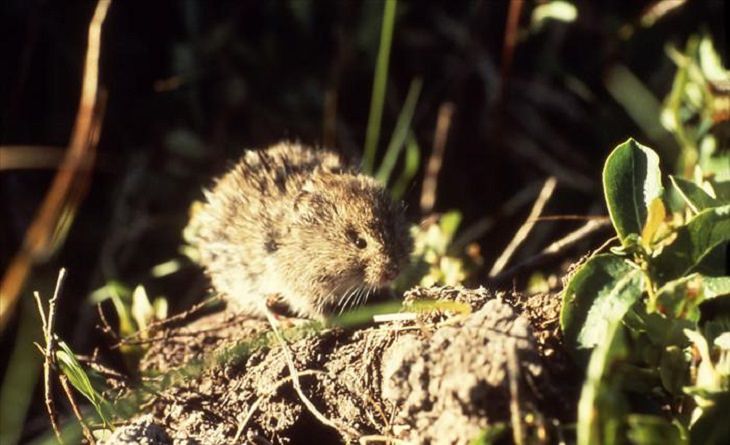
Meadow vole. A vole is a small rodent, similar to a mouse but with a denser body, a shorter and hairier tail, and a rounder head. Basically looks like a cross between a mouse and a hamster. It only lives for 3-6 months.
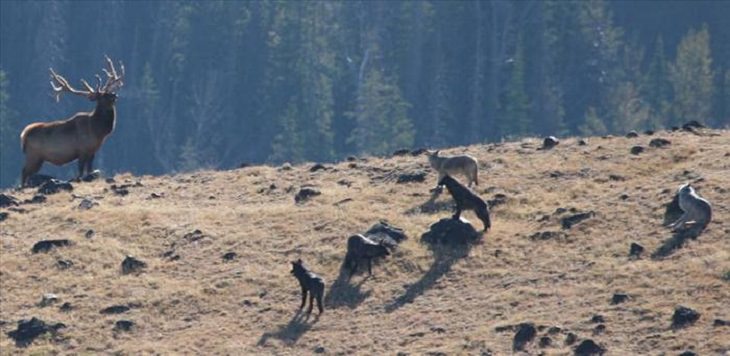
A standoff between hunting wolves and a big elk. A moment when life and death are hanging in the balance.